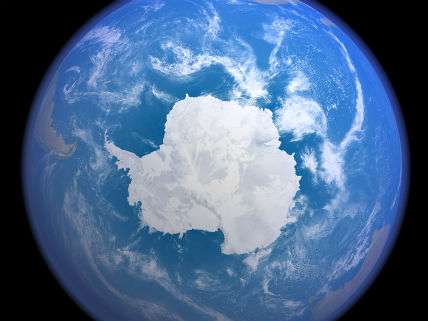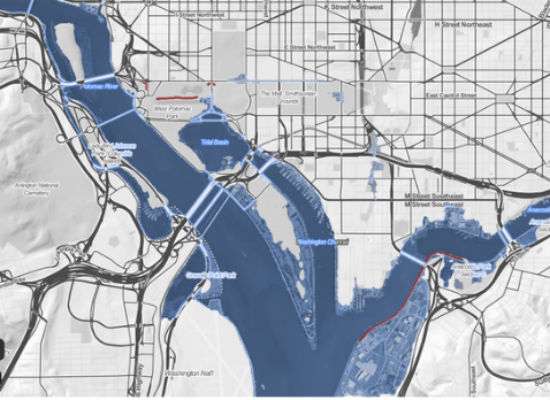Washington DC Washed Away by 2100 by Melting Antarctic Ice Cap?
Actually, no. The Capitol is in no danger.

A new study published in Nature suggests that rising temperatures caused by man-made global warming could raise average sea level as much as six feet by 2100 and much more in the following centuries. According to new models, the seas will rise as Antarctic ice shelves that are currently grounded below sea level disintegrate. This projected increase is considerably higher than that reported in the Intergovernmental Panel on Climate Change's Fifth Assessement report in 2013 that found that future sea level increase would likely be between 10 and 36 inches.
Researchers claim that their their model outputs compare well with the sea level rise that occurred during the previous interglacial period 130,000 to 115,000 years ago when average global temperatures where only a few tenths of degree Celsius warmer than they are now. Sea levels during that period rose 6 to 9 meters higher than now. The new report suggests that unabated man-made warming could cause sea levels to rise that high by 2500.
Interestingly, their model results are bolstered by another article just published today in Nature Geoscience that finds that the intrusion of wamer sea water may already be undermining Antarctic ice shelves grounded below sea level by creating channels beneath them. These channels already appear to be causing new areas of crevassing that could lead to extensive fracturing of the shelves. "We conclude that basal channels can form and grow quickly as a result of warm ocean water intrusion, and that they can structurally weaken ice shelves, potentially leading to rapid ice shelf loss in some areas," note the researchers.
Clearly, if this were to occur, major coastal cities like Boston, New York, London, and Shanghai would be at risk. So what would Washington, DC look like by 2100?* See below.

The New York Times in its article on the study reports:
"We are not saying this is definitely going to happen," said David Pollard, a researcher at Pennsylvania State University and a co-author of the new paper. "But I think we are pointing out that there's a danger, and it should receive a lot more attention." …
But those same scientists emphasized that it was a single paper, and unlikely to be the last word on the fate of West Antarctica. The effort to include the newly recognized factors imperiling the ice is still crude, with years of work likely needed to improve the models.
Before abandoning our coastal cities, it is worth noting that some have already had to cope with extensive sea level rises. For example, due to subsidence as a result of ground water withdrawal, some areas of Tokyo experienced and survived relative sea level increases of up to 15 feet since the 1930s.
*Disclosure: If this map is right, my condo at Dupont Circle is in no danger of becoming waterfront property this century.


Show Comments (126)